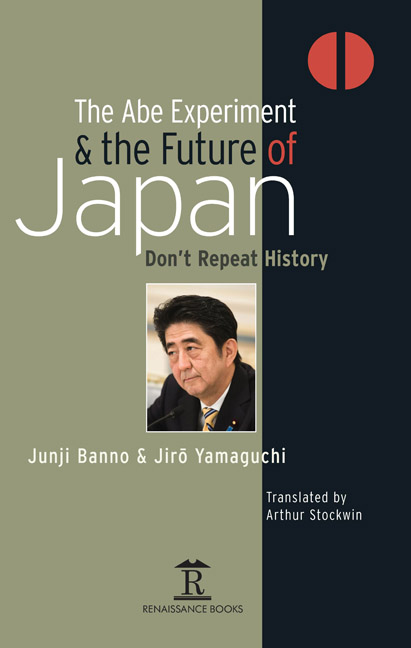Book contents
- Frontmatter
- Contents
- Foreword
- Translator’s Preface
- Conventions
- Chapter 1 Should the Aim be to Prevent Constitutional Revision?
- Chapter 2 Why was Post-war Pacifism Defective?
- Chapter 3 Is there a Political Elite in Japan?
- Chapter 4 Is the Liberal Democratic Party Really Tough?
- Chapter 5 Why Can’t We Tackle Reduction in Inequalities?
- Chapter 6 Where Should Japan Go From Here?
- Afterword
- Index
Chapter 3 - Is there a Political Elite in Japan?
Published online by Cambridge University Press: 30 April 2022
- Frontmatter
- Contents
- Foreword
- Translator’s Preface
- Conventions
- Chapter 1 Should the Aim be to Prevent Constitutional Revision?
- Chapter 2 Why was Post-war Pacifism Defective?
- Chapter 3 Is there a Political Elite in Japan?
- Chapter 4 Is the Liberal Democratic Party Really Tough?
- Chapter 5 Why Can’t We Tackle Reduction in Inequalities?
- Chapter 6 Where Should Japan Go From Here?
- Afterword
- Index
Summary
IF AN ANTI-SYSTEM ELITE HOLDS POWER
Banno. If we look back at the road to war trodden by Japan before the war, we see that half way through the 1920s universal suffrage was introduced into parliamentary politics, but at exactly the same time, the Army and Navy elites were being excluded from the ruling elites..
The Minseitō Government of Hamaguchi Osachi failed to defend the demands of the Navy to secure a number of large cruisers amounting to 70 per cent of the American total, and in 1930 signed the London Naval Disarmament Treaty, overriding opposition from the naval high command. Subsequently, Minobe Tatsukichi was pressing for the army and navy ministers to be civilians. Dissatisfaction with all this quickly burst forth, with young Army and Navy officers losing their sense of belonging to a ruling elite, so that they developed the intention of becoming an anti-regime elite, like socialists and the right wing. They took part in military coups d’état and terrorism, and overseas the Kantōgun cooked up the Manchurian Incident. If they had been the ruling elite, they would have determined national policy, but as an anti-regime elite, they acted irresponsibly, and at times they even killed the prime minister.
Yamaguchi. You say that from the mid-1920s the Army and Navy became an anti-regime elite. So that it is interesting that the Kantōgun got out of control, and that domestically military men conducted acts of terror.
But why did it end up like that? It was the molitary that controlled those who designed the Meiji State, and the military elite, until around the time of the Russo-Japanese War, seems to have been quite rational.
Banno. Things gradually shifted. Even when the era of party cabinets began, Katsura Tarō founded the Rikken Dōshikai party, Tanaka Giichi became President of the Seiyūkai, Ugaki Kazushige was involved in the Minseitōparty, top military brass continued in an elite role, and became one wing of the political elite. But since universal male suffrage was introduced in 1925, the Army and Navy were excluded from political decisions. A symbol of this was the London Disarmament Treaty of 1930. The young naval officers interpreted this to mean that the political parties had stolen power, and were plotting to go so far as also to steal the right of command.
- Type
- Chapter
- Information
- The Abe Experiment and the Future of JapanDon't Repeat History, pp. 49 - 63Publisher: Amsterdam University PressPrint publication year: 2016



